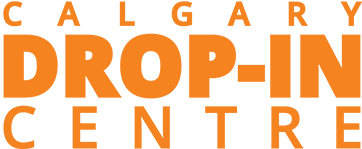What is a Housing-Focused Shelter?
August 29, 2023

By Inam Teja, Policy & Advocacy Specialist Calgary Drop-In Centre
At the Calgary Drop-In Centre, we’re not just focused on making our guests’ stays in shelter better, we’re focused on making those stays shorter. Since 2017, the DI has housed 2,343 people and less than 5% of them are back staying in the DI’s shelter as of August 1st.
The Paradox of Working in a Shelter
The paradox of working in a shelter: your goal is to make your job irrelevant. Our goal at the DI is to ensure that homelessness is rare, brief, and non-recurring. While the DI may be known as a place for Calgarians to go if they don’t have anywhere to stay overnight, simply being a warm place to stay doesn’t do anything to reduce the number of people experiencing homelessness. So how can the DI’s emergency shelter services make themselves unneeded? Our answer lies in the ‘Housing Focused’ approach.
What is a Housing-Focused Shelter?
At its core, a housing-focused shelter redefines the purpose of emergency accommodation. Instead of considering shelter a permanent solution, or even a mere stopgap, it treats shelter as a process toward securing stable housing, not a destination. Rather than focusing solely on programming, rehabilitation, or other supports, the ultimate goal is to facilitate the process of re-housing our guests.
By embracing this approach, we aim to support our guests to transition out of survival mode and into a home where they can feel safe, secure, and ready to meet the rest of their needs. The housing-focused approach respects the dignity of all our guests, a core value of the DI – and better still, it works. Since 2017, the DI has housed 2,343 people and less than 5% of them are back staying in the DI’s shelter as of August 1st.
What does Housing-Focused Shelter look like in Practice?
At the DI, we try to find every new person who approaches us an alternative to living in shelter as quickly as possible. The DI aspires to engage diversion supports for each new guest, which means exploring alternative housing solutions. If we can help someone find a family member who can take them in, or some other substitute to shelter, we aim for that whenever possible. For those who do require shelter, we have a diversion team that employs rapid resolution strategies with the goal of expediting their return to stable housing within 21 days of entry.
The DI also has a skilled Housing Team, who can help our guests with anything from one-time support in replacing lost ID needed to apply for a rental unit, to hands-on case managers who work through complex situations to ensure that our guests are able to receive housing that meets their physical and mental health needs or any other requirements. Our housing team also continues to work with individuals once they are housed to increase their chances of retaining their home, preventing future homelessness. Housing is one step along the way, community integration is the ultimate goal. Our approach recognizes that each of our guests is unique and therefore requires a housing solution that isn’t simply one-size-fits-all.
Some of the work done by our housing team is coordinated with other organizations within Calgary’s Homeless Serving System of Care. This network of organizations uses a tool called Coordinated Access and Assessment, which matches people experiencing homelessness to the housing and supports they need. Coordinated access ensures that when the DI doesn’t have the right housing support available internally for one of our guests, we can work with others to preserve everyone’s right to housing.
What More Needs to Be Done?
The biggest challenge we face is a lack of appropriate housing units to move our guests into. Canada is broadly facing a housing shortage, and Calgary is certainly not immune to this. But beyond just a general housing shortage, we are facing a shortage of affordable and deeply affordable (also called non-market) rental housing. OECD countries, on average, have about 6% of their rental housing stock as affordable units, but Calgary is only around 3%. The DI’s clients can experience months-long (and in many cases years-long) wait times to get a spot in these non-market housing units. Even though housing is recognized as a human right in the 2019 National Housing Strategy Act, it’s clear that this right is not being effectively protected in Calgary.
We also need to do more prevention work to reduce the number of people at risk of housing instability, something that is top of mind for many Calgarians these days with the rising interest rates, rental rates, and utility expenses. Preventing people from losing access to housing via evictions and foreclosures must be a priority. Furthermore, prevention initiatives, like improving discharge planning for hospitals and correctional facilities, have been proven to reduce homelessness in a cost-effective manner.
Is a Housing Focus All That We Need?
Being Housing-Focused does not mean we have the whole solution to end homelessness. While it is an approach that has proven successful in Calgary and around the world, we also must consider the many other important supports, approaches, and initiatives that contribute to ending homelessness. Trauma-informed care, harm reduction, and client-centred approaches are all important to incorporate in conjunction with a housing-focused approach.
It is vital to recognize that losing access to housing is not always rooted in economic barriers; 2SLGBTQ+ youth evictions, mental health stigma, intergenerational trauma for Indigenous families, and discriminatory rental practices all impact a person’s access to housing. The DI’s Housing Focus is a key part of our strategy to make emergency shelter services unneeded, but for it to be effective it requires a recognition of broader socioeconomic factors, prevention work, and, importantly, available housing.
Author’s Bio
Inam (he/they) is a passionate Calgarian, armed with a master’s in public policy from Oxford, tackling solutions to our city’s biggest problems. Inam is keen to connect with bold changemakers in our community to work together on shaping the future of Calgary.
Recent Posts
December 11, 2025
December 9, 2025




